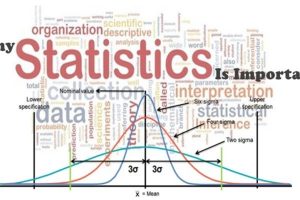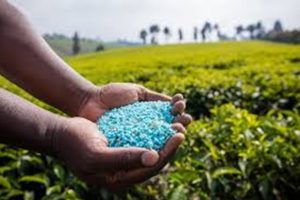
During the last decade, the government of Ethiopia has strived to bring structural change in the economic arena by expanding manufacturing and enhancing its contribution to the nation’s Gross Domestic Product (GDP). However, the sub sector registered only 14.1 percent on average.
Reasons for the substandard achievement include: limitations in terms of supplying industrial inputs and financial provision; weak value chain between industries; less productivity, limitation in executing capacity and sporadic violence here and there left the sector inefficient, Shisema Gebresilasie, the Inputs and Infrastructure Sector State Minister at the Ministry of Industry said.
He further said that in the last four years, Ethiopia faced challenges brought by the international economic crises, the outbreak of COVID-19 and others that left the manufacturing industry sector to be depressed. The challenge still continued and to come up with viable solutions step by step, the Ministry launched a movement to stimulate the sector and enable the industries to produce in their full capacity. To that end, all stake holders are comprised.
As to the state Minister, the movement known as “Let Ethiopia produce” has various objectives to be achieved and among others to make difference, resolving problems and upgrading the sector based on the international reality.
As to Shisema, the movement based its objectives on the nation’s ten years perspective development plan and home grown economic reform. It has its own phases for industry development particularly for the manufacturing sector.
The phases include assessing the number of industries; what the industries do produce; how much foreign currency the nation earns from the sector; how many job opportunities can be created; how could import substitution can be scaled up and how structural change can be achieved. These all are the driving factors for the motto “Let Ethiopia Produce” movement.
As to Shisema, there are several study papers conducted by various think tank groups with regard to the industrial development. The limitations of the 10 years perspective economic development plan also identified. In addition, there are studies conducted by international researchers with regard to the 10 years perspective economic development plan. The studies also indicate that most industries in Ethiopia are producing by only 20 percent of their capacity and the average producing capacity is below 50 percent. Therefore, support should be rendered to the industries in order to enable them make use of their utmost capacity.
In fact it is impossible to up lift their capacity up to 100 percent shortly, but if it is possible to reach 60 to 70 percent of their capacity, it will bring tremendous achievement in terms of obtaining hard currency and job creation. Therefore, industries must produce as much as their capacity allows.
It is understood that all industries do not face challenges in a similar way. Each has its own managerial and human resource shortcomings and may have financial deficit and might indulged in to problem due to its own weakness or by external factors. Therefore, each firm needs the support of various institutions.
While carrying out the production process starting from utilizing inputs up to the final product and supplying to market, the industries may come across various challenges. Basically, an industry needs logistics to obtain input from the site of production up to the location the manufacturing industry is established and this is not an easy chores. It also needs storage facility and market linkage. For example, if an investor wants to engage in manufacturing industry, he has to get production place and to that end the establishment of industrial parks in this regard created conducive environment.
The investor needs also to plant machineries, employ workers, and supervise the quality of the products, provision of loan with hard and local currencies and logistics to transport the out puts and inputs. Hence, to assess the strength and weakness of the firm, it needs to check each process and identifying the problem.
Continuous checking is essential whether the system functions smoothly or not. According to the State Minister, assessment findings indicated that each firm has its own weakness as mentioned above including the Ministry itself. Each industry has its own weakness including in the due process of production and service provision. Other problems are cross sectors.
There are also various institutions under each sector. Both private and public banks have stake on industrial production, National Bank and the Ministry of Revenue have also their own stakes.
In order to relieve the challenges the manufacturing industry encounter, Ministry of Finance and Ministry of Trade and Regional Integration should also work in collaboration with the industries.
A firm which utilizes agricultural products as input should have to work collaboratively with the Ministry of Agriculture and related institutions.
Creating joint venture with the security institutions is also essential for the safety of the industry. It also needs to be aware that the firm will face competition from other industries in the international market.
For instance, a firm that produces shirt or shoes has to know that it is competing with other companies that are located in other countries and producing the same commodities. Thus, to become a winner in the market, it has to produce standard commodities with better quality and supply the products to the international market with affordable price and the support provided to the firm must consider such aspects.
The current industry policy also must be evaluated weather it goes in line with the international context or not; whether it is supporting the relevant producing industry or not, and whether the supported firm correctly utilized the support or not. All in all, the industry policy itself should be revised to overcome the challenges in a proper manner.
According to Shisema, the sector encountered problems occurred internationally in the past including the COVID-19 pandemic and the war broke out between Russia and Ukraine.
On the other hand, even though the country has been undergoing severe political and economic challenges in the last two and three years, various industries have been established. In addition to these, modern agro industrial parks are constructed and if all shades in the parks are occupied and start production with their full capacity, the aforementioned problems might be resolved.
Asked whether the “Let Ethiopia Produce” movement is simply a campaign which lasts for short period of time or not, Shisema replied that the movement will continue for long without interruption until it meets its goal. Other countries’ experience indicates that such venture enabled them to uplift the level of development of their respective industries.
The movement is led by higher officials of the government and takes long time to achieve structural change. The movement comprises educational and research institutions and enable to produce qualified human resource. The technical committee is already established and will carry out its duty for ten years. The movement also continues until enabling environment is created to do business easily for industries.
According to Shisema, promoting agro processing is a part of the movement. If the existing agro-industries fully engaged in the sector, 450 firms can start production. There are also other agro-industries located in various parts of the country. In line with this, there is high demand for agricultural products by the industries and others. By the same token, there is a weighty need for industrial products by farmers and consumers for local consumption; by exporters to earn foreign currency; and by other manufacturing industries for input.
Flouring mills and edible oil factories highly depend on agricultural products as they use it as input for production.
As to the State Minister, import substitution can be applied in steel production and mining sector. Until recently, ceramic products were imported from abroad but currently, they are produced locally. Agro-industries have great opportunities for their own growth. For example, if a given edible oil industry needs 1.5 million quintals of soya bean, farmers can benefit by supplying the product and through time they can increase their income and boost their production.
BY ABEBE WOLDEGIORGIS
THE ETHIOPIAN HERALD THURSDAY 2 JUNE 2022





